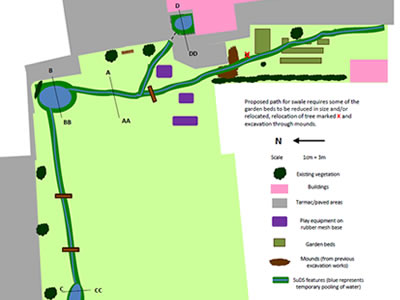Where
Location
Sydney Rd, Muswell Hill, London N10 2NL
Description
This project aimed to solve water quality and flooding issues as well as to enrich the school’s natural environment and provide opportunities for teachers to engage school students around ideas of sustainable water and wetland management.
Wildlife-rich SuDS were designed in part by teachers, parents and children and were retrofitted throughout the school grounds. As well as creating new opportunities for wetland wildlife, the designs also aim to improve the quality of surface water entering the Pymmes Brook and its tributaries; to provide outdoor learning opportunities and reducing flooding and water logging of school playing fields and its all weather sports pitch.
The school is located on a moderately steep slope meaning that surface water flows from playgrounds in the “upper” school down to a lower area often flooding playing fields and a hardcourt football pitch rendering these un-usable for days after heavy rainfall.
Figure 1. SuDS plan (click the image to enlarge)
Prior to SuDS construction, rainfall and surface water discharged via drains and overland flows into a tributary of the Pymmes Brook carrying with it sediments that reduce stream water quality and impact on in-stream habitats.
Main SuDS used
The aim of this scheme was to reduce flooding of fields, playgrounds and hard court, improve water quality of surface water leaving the site, introduce visible and legible surface water management features enabling teachers to use them as a learning resource and as a play space for school kids.
The main SuDS components used are swales, detention and retention areas and all have been designed with the needs of children and teachers in mind.
Rainfall from a portion of the roof space has been diverted to a newly-constructed raised bog garden planted with native wetland plants (and which also doubles as a meeting place with an integrated seating area for parents and children).
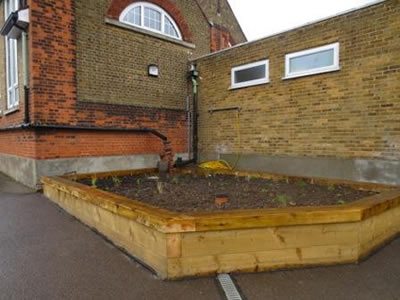
Figure 2: Bio-retention bog garden with seatingshowing disconnected downpipes and overflow drain
Overflow from this then travels via a short length of a drainage channel into a narrow, “tributary” grass swale and then into a larger grass swale which also carries additional surface water flowing off the tarmac playground in the upper school
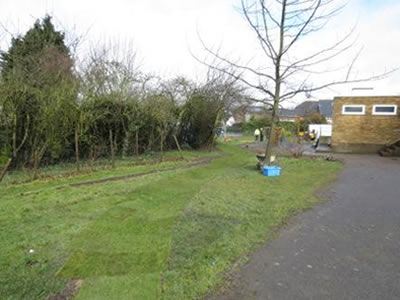
Figure 3. New tributary grass swale taking run-off from upper playground
Overflow from the main swale then feeds a small retention area (named “boggy corner” by the schoolchildren) and from there it flows into a sinuous, meandering swale/detention area alongside the playing fields
Exceedance flows travel into the surface water drain via a small retention area and overflow feature
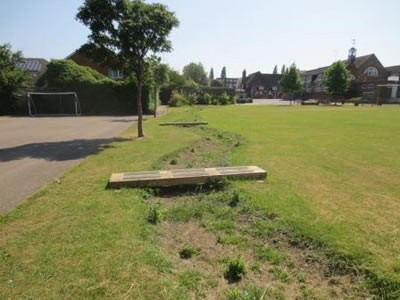
Figure 4. Detention area with bridges and planted with native plants
How it works
The scheme uses source control features (rainfall diverted from downpipes into a raised bog garden – essentially, a bioretention area), site control (small retention areas and a detention area, the so-called “boggy corner”) and conveyance features (grass and “biodiverse” swales designed and planted to mimic a natural river system). Infiltration to groundwater also occurs.
This scheme has been designed to manage all of the run-off from a 1:10 event and 50% of a 1:100 event.
A key design consideration for this project over and above the desire to alleviate flooding and improve water quality was the creation of fun, legible water management features that schoolchildren could interact with both in play and during formal outdoor learning sessions and which added valuable wetland wildlife habitats to the school scene.
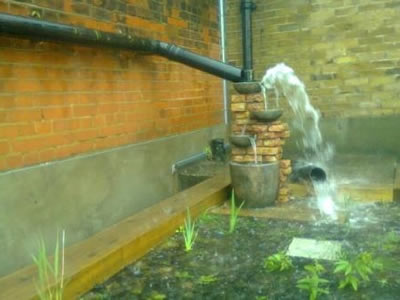
Figure 5. Heavy rainfall
With this in mind WWT designed a scheme that allows adults and children to get closer to wetlands through their involvement in scheme design, planting (each student planted at least one plant in their SuDS) and management.
The scheme didn’t reduce the area of informal play space at all but vastly increased opportunities for play and learning about wetlands and surface water management. Children at Hollickwood are now much more aware about the need to manage rainfall sustainably and about the value of wetlands for people and wildlife. Added to that, they have fun, new places to play in.
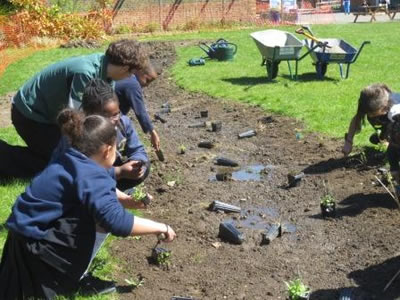
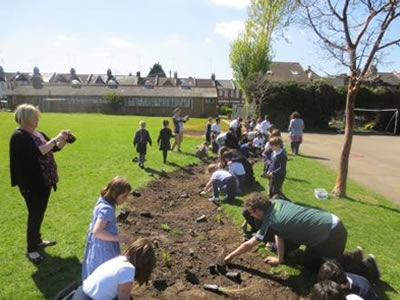
Figure 6 & 7 - Hollickwood School planting
Specific details
Staff, parents and children at Hollickwood school were very enthusiastic about this project and were very keen to be involved at each stage. This has meant that the SuDS quickly became a talking point in the school and is now central to school life.
Construction costs were approximately £15k ex vat (excluding costs for design, WWT staff time and planting).
Design and construction
Designs for this scheme were drawn up by WWT Consulting and WWT staff with inputs from Hollickwood staff and students.
Approximately 250 sq m of SuDS comnponents were constructed which were planted with 500 plant plugs (22 native species were used along with broadcasting of native wildflower seed).
Footbridges have been incorporated into swale design allowing children to play around and in the features.
External contractors were appointed after submission of tenders from a short-list of preferred contractors.
Maintenance and operation
Hollickwood School will manage the SuDS using a bespoke management guide and training supplied by WWT. The school management team includes the Estate Manager, school governors and school children. WWT continues to support the school in maintenance and operation as well as developing learning resources which will help teachers maximise the benefits of these features.
Benefits or achievements
In terms of drainage benefits, water quality improvements have been secured, playground and hardcourt flooding has been alleviated and playing fields dry out more quickly after rainfall as run-off drains into the swales and detention areas.
In June, 2013 when local streets were flooded after an intense cloudburst, the SuDS coped according to the design criteria and the school was able to hold its annual summer fair the following day unhindered.
Alongside these benefits, the school now has a much richer natural environment that children enjoy learning about and playing in. This cohort of students will grow up with SuDS as an everyday part of their school life and will develop first-hand knowledge of wildlife-rich SuDS and their value.
Challenges or lessons learnt
A key challenge was understanding the school’s needs and integrating these into design. This was achieved through early engagement with staff, students and parents in design workshops and competitions. Whilst this took time in the early stages it was critically important to the success of the project and has secured “buy-in” for future management, WWT’s Project Officer was able to support this school through this process and ensure final designs met with approval from all stakeholders.
Management of the SuDS and associated wetland habitats requires knowledge as well as time. WWT has provided a management plan and training to the management team (which includes schoolchildren and parents) to help build their knowledge and confidence.
Training in plant identification as well as wetland habitats in general has also proved to be critical in ensuring appropriate management.
In reality, management requirements have not proved difficult or time consuming and have largely focused on weeding and litter collection.
In order for the SuDS to be used effectively by teachers as a learning resource, WWT has produced educational resources and supported teaching staff with training workshops and demonstrations.
Other issues
Interaction with the Local Authority (or client)
The building control department of the London Borough of Barnet visited to make a site assessment and raised no objections to the scheme.
Team and details
The scheme was delivered by WWT alongside:
Contractors: Warwick Landscaping Ltd www.warwicklandscaping.co.uk
Design team: WWT Consulting, Slimbridge, Gloucestershire www.wwtconsulting.co.uk
Status: The design and construction completed in 2013.
For further information on this project please contact Andy Graham, Head of Wetlands for People, WWT andy.graham@wwt.org.uk




